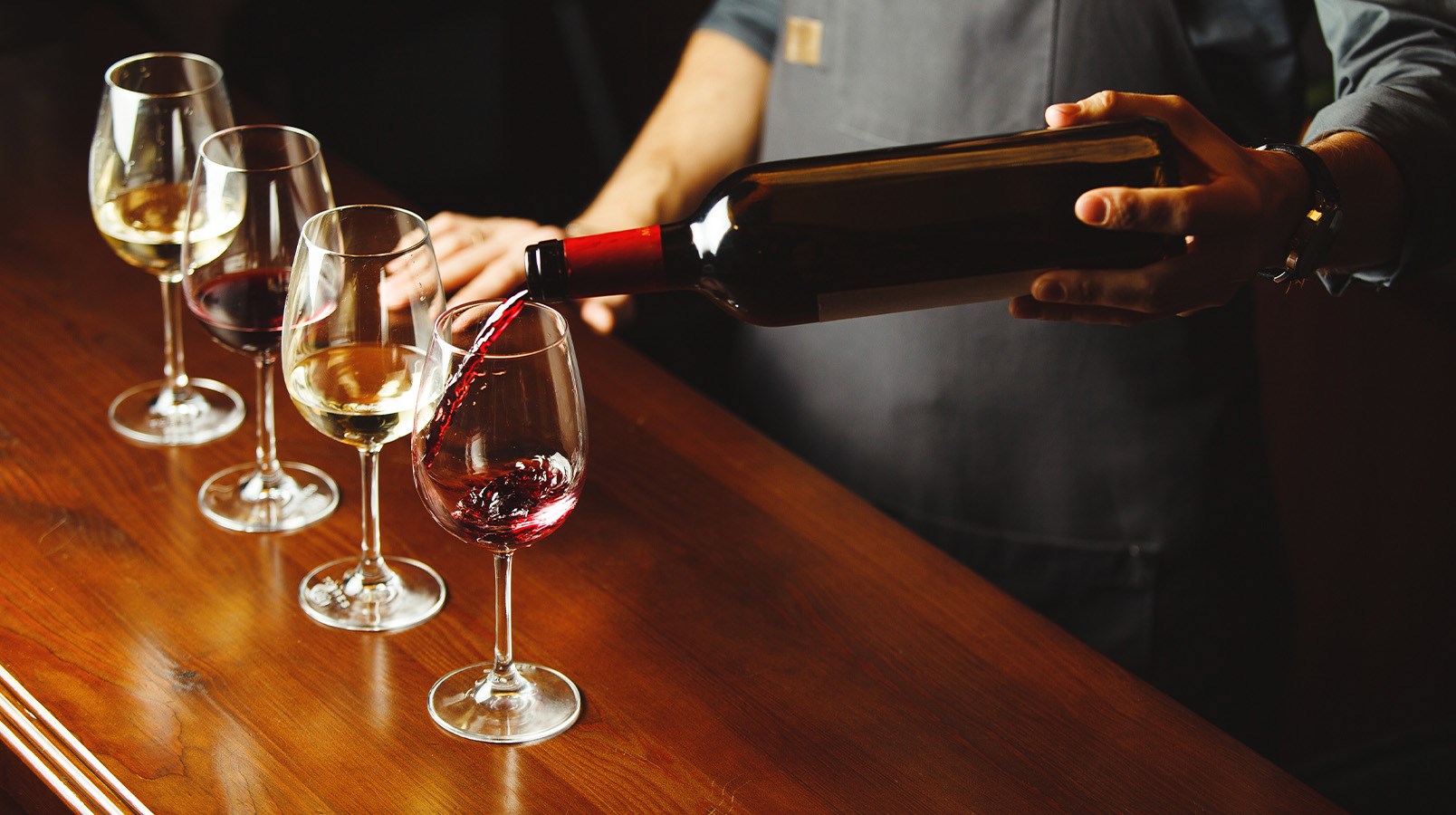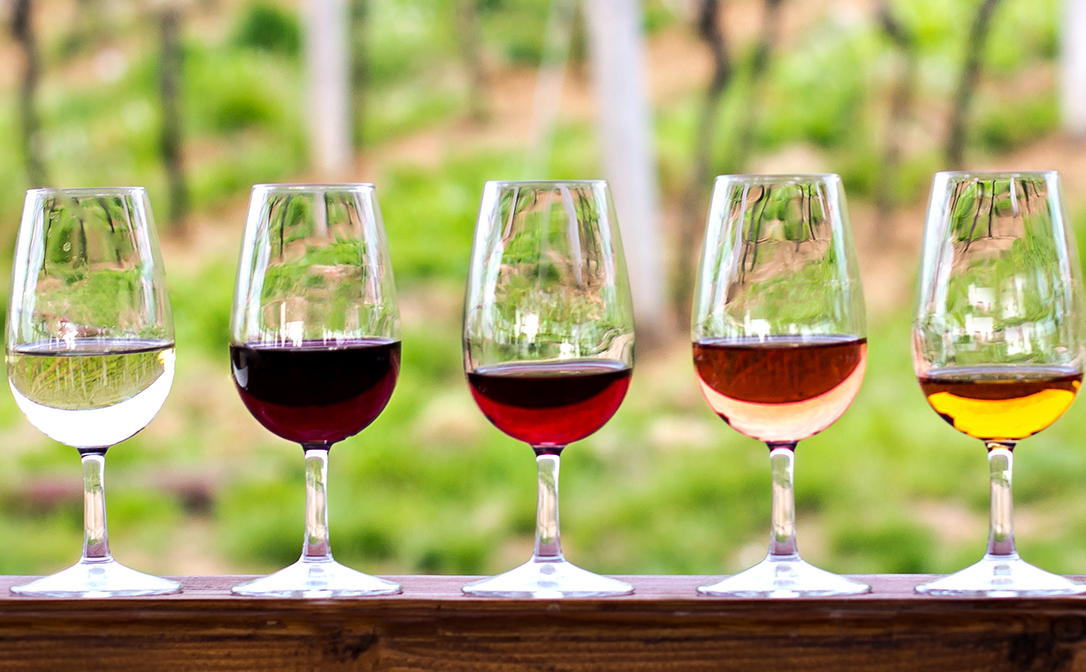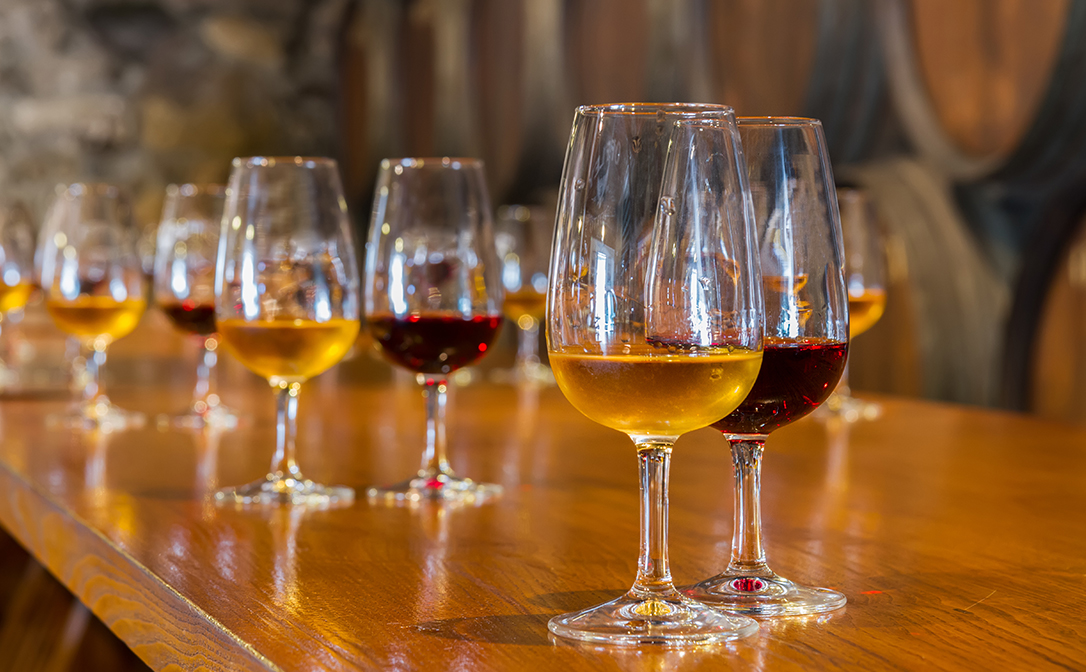When faced with a large wine list, or a shelf stacked high with bottles, the world of wine can seem overwhelmingly complex. It helps to start with the basics – here’s our simple guide to the types and styles of wine that you’re likely to come across in any given wine shop or restaurant.
To start off, almost all wines can be grouped into one of three ‘types’ – still, fortified or sparkling.
Looking to kickstart your wine education journey? Our Level 1 Award in Wine provides a hands-on introduction to the world of wine, for those starting a wine career or pursuing an interest in wine.
1: Still wines
Simply put, a still wine is any wine that is not sparkling. This is the largest category of wine by far – most wines you can think of are still wines, so we need to further categorise them into styles in order to understand them better.
Colour – white, red or rosé?
White wines are typically made from white grapes. Most have a pale lemon colour, but some look deeper in colour and more golden.
Examples of white grapes:
- Chardonnay
- Sauvignon Blanc
- Riesling
Red wines must be made from black grapes. They gain their deeper red colour and mouth-drying ‘tannins’ from the grape skins, which are kept in contact with the juice during fermentation.
Examples of black grapes:
- Malbec
- Pinot Noir
- Cabernet Sauvignon
Most rosé wines also gain their colour from ‘skin contact’ with black grapes, but typically for a much shorter time than for red wines, hence their paler pink colour. Rosé wines are usually best served like white wines – chilled, in smaller glasses.
Still wines come in a wide range of hues and styles.
Body – light, medium or full?
‘Body’ refers to the overall feel of the wine – how mouth-filling it is.
Light-bodied wines usually feel delicate and refreshing when tasted. They make great aperitifs but can sometimes be overpowered by powerfully-flavoured dishes.
Examples of light-bodied wines:
- Italian Pinot Grigio
- Wines from the Beaujolais region of France
Full-bodied wines typically have intense flavours and higher than average levels of alcohol. They tend to coat your mouth and feel viscous when tasted and can usually pair well rich and flavourful dishes.
Examples of full-bodied wines:
- Oaked Chardonnay from warm, sunny climates like California
- Red wines made using the grape variety Cabernet Sauvignon
You can learn more about ‘body’ with our busting wine industry jargon post.
Sweetness – dry, medium or sweet?
Sweetness refers to the amount of sugar in the wine. Most wines are dry, meaning that they don’t taste sweet at all. Some wines have a little sweetness when tasted – these are often referred to as medium.
Sweet wines, often referred to as ‘dessert wines’, are wines where sweetness is the dominant taste. These wines often pair well with sugary desserts or salty cheeses.
Examples of sweet wines:
- Sauternes from France
- Tokaji from Hungary
- Port (note – this is also a fortified wine, see below)
Other key stylistic terms
Aromatic – this term is usually used to refer to a wine which gives off intense aromas of flowers or herbs. These can be white or red, though most aromatic wines are white. The grape variety/ies used and the winemaking method is key to determining how ‘aromatic’ a wine is.
Examples of aromatic grape varieties:
- Riesling
- Gewürztraminer
- Viognier
Oaked – this refers to a wine that has been made in contact with oak, traditionally by maturing it in an oak barrel. After some time, the wine takes on flavours from the toasted wood – think vanilla, toasted bread and spice. Oak ageing can also add body to a wine.
Examples of oaked wines:
- Crianza, Reserva and Gran Reserva Rioja (Spain)
- Some styles of Chardonnay
- Most wines made from Cabernet Sauvignon
While most sparkling wines are white, rosé and red styles are also produced.
2: Sparkling wines
Sparkling wines are fizzy because they have carbon dioxide trapped within them. This extra sparkle is perfect for celebratory occasions and these wines make excellent gifts and aperitifs. Be sure to serve sparkling wines well chilled – this will help to keep them bubbly for longer once opened.
There are many different sparkling wines to explore. Each has its own distinct flavours, determined by which grape varieties are used and where they’re grown, how the wine is made, and how it’s aged.
Examples of sparkling wines:
- Champagne (France)
- Cava (Spain)
- Prosecco (Italy)
Port is a common style of fortified wine, but did you know you can also get white port?
3: Fortified wines
A fortified wine is a wine that has had extra alcohol added to it, in the form of a neutral high-strength grape spirit. They typically have between 15-22% alcohol by volume.
One of the most important historical reasons for fortifying wine was to strengthen it (to ‘fortify’ means ‘to strengthen’) so that it stayed fresh for longer, back before antioxidants and antibacterials were well understood.
A great number of different fortified wine styles exist. All ports are sweet, for example, while most styles of sherry are dry. Some fortified wines taste very fresh and fruity, while others have intense savoury and nutty flavours. The diversity of fortified wine styles is fascinating and well worth exploring.
Examples of fortified wines:
- Port (Portugal)
- Sherry (Spain)
Keen to discover more about the basics of wine characteristics? Our internationally recognised Level 1 Award in Wines will give you the foundation of knowledge to begin your journey in wine. Find out more here.
Related content:





